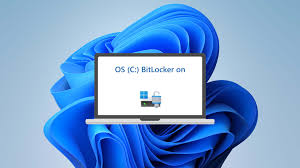ShrinkLocker Emerges
In a concerning development, a new strain of ransomware known as ShrinkLocker has surfaced, leveraging the BitLocker encryption feature embedded within the Windows operating system.
Decoding BitLocker: A Brief Overview
BitLocker, introduced in 2007 with Windows Vista, serves as a robust full-volume encryptor, safeguarding entire hard drives from unauthorized access. Over the years, it has evolved, employing advanced encryption algorithms like XTS-AES to bolster security.
ShrinkLocker Unveiled: An Insight
Security researchers from Kaspersky recently uncovered instances of ShrinkLocker in action, targeting systems in Mexico, Indonesia, and Jordan. Named for its utilization of BitLocker, ShrinkLocker compresses non-boot partitions and creates new primary partitions, further complicating recovery efforts.
Evolution of Ransomware Tactics
The emergence of ShrinkLocker underscores the relentless evolution of ransomware tactics. Attackers continually refine their methods to bypass detection, as evidenced by the abuse of native BitLocker functionalities observed by researchers.
BitLocker’s Troubled Past: A History of Exploitation
ShrinkLocker joins the ranks of ransomware variants exploiting BitLocker. In 2022, incidents involving Iranian-linked attackers and the Russian agricultural giant Miratorg highlighted the tool’s vulnerability to misuse.
ShrinkLocker’s Modus Operandi
Upon infiltration, ShrinkLocker executes a VisualBasic script, leveraging Windows Management Instrumentation to gather system information. Subsequently, it conducts checks to ensure compatibility before initiating encryption, demonstrating the sophistication of modern ransomware operations.
Vigilance in the Face of Threats
The emergence of ShrinkLocker serves as a stark reminder of the ever-present threat posed by ransomware. As attackers continue to innovate, it is imperative for organizations and individuals alike to remain vigilant and adopt robust cybersecurity measures.




